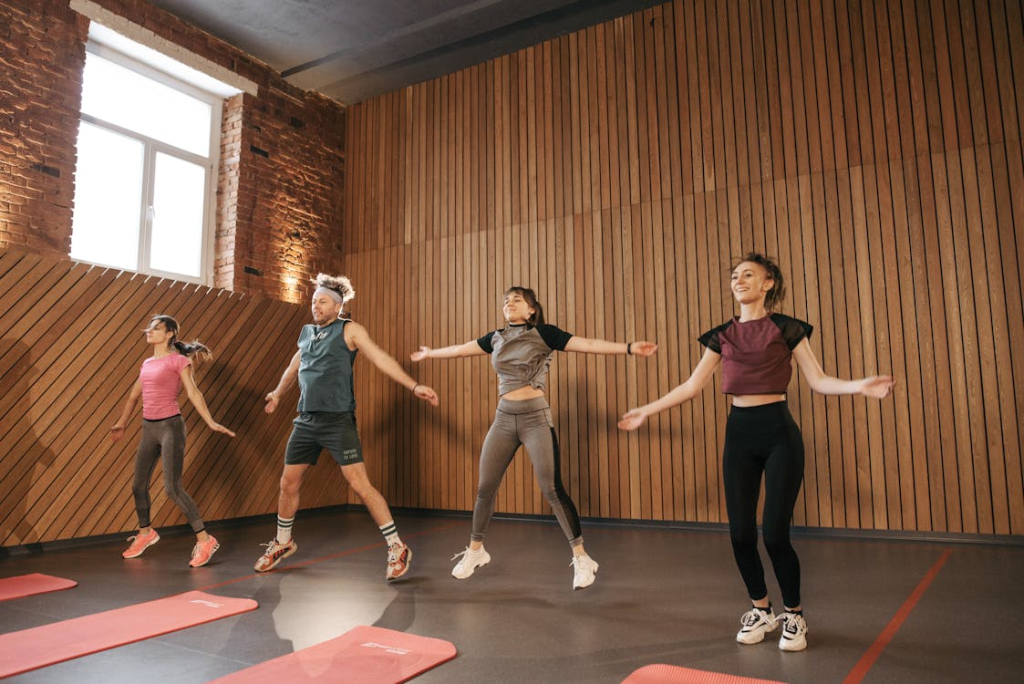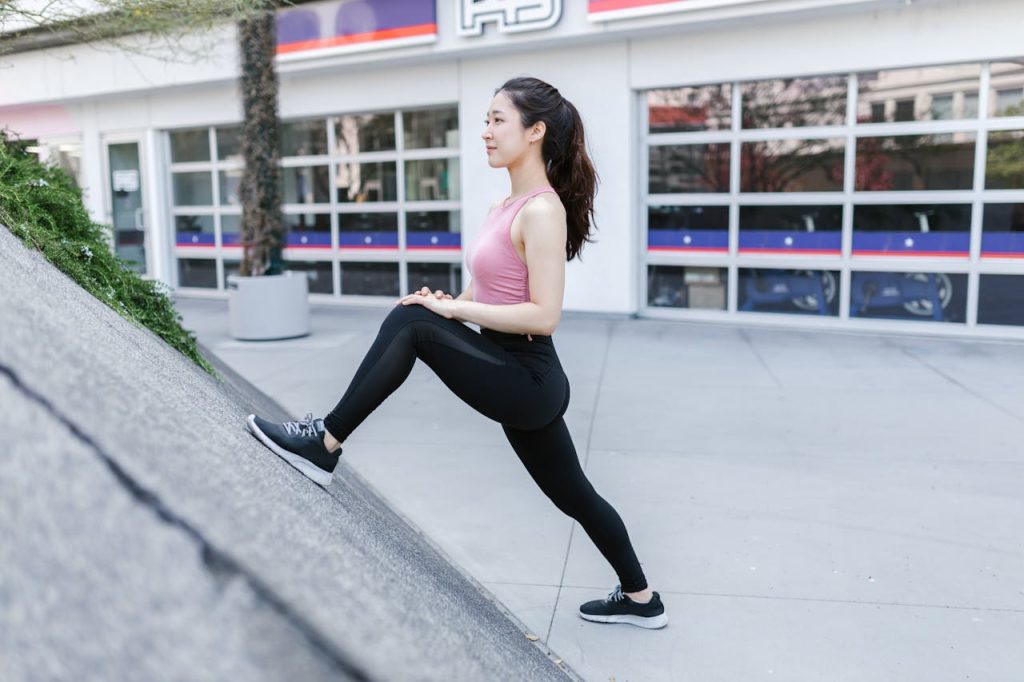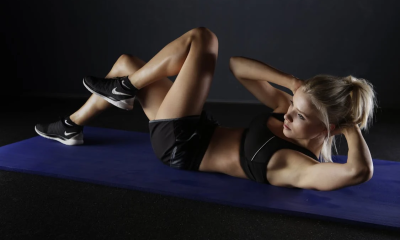Fitness
Healthy Meal Prep for Weight Loss: Simple Strategies to Save Time and Eat Healthy All Week
The struggle between saving time and sticking to a healthy diet can leave even the most resolved health enthusiast feeling discouraged. But fear not! Meal prep is your secret weapon to save time and take control of your meals with precision.

Are you juggling a busy schedule while attempting to lose weight? The struggle between saving time and sticking to a healthy diet can leave even the most resolved health enthusiast feeling discouraged. But fear not! Meal prep is your secret weapon to save time and take control of your meals with precision. Now, we’ll walk you through the intricacies of healthy meal prep for weight loss, providing you with a step-by-step roadmap to easily integrate this powerful practice into your routine.
Table of Contents
1. Understanding the Meal Prep Revolution
Maintaining weight loss is a challenge in our fast-paced culture, with convenience often trumping health. Feeding into this, research often points to the adverse effects of hectic lifestyles on our dietary habits. However, meal prep provides a systematic approach to overcome these hurdles. By carving out dedicated time each week to plan, prepare, and portion your meals, you can avoid the pitfalls of impulsive and unhealthy eating.
The benefits are numerous: you’ll not only save time during the week but also gain insight into your caloric intake, break free from the grip of fast food, and significantly reduce food waste.
The Math Behind It
At its core, weight loss is often a numbers game—calories in versus calories out. Setting clear and attainable goals for your daily caloric consumption and understanding your weight loss target is pivotal. Meal prep ensures a level of control over what you consume, as you’ve already planned and portioned your meals to align with your objectives.
Recipes That Resonate
Meal planning should be richly rewarding, not a mundane chore. Bursting with a myriad of flavorful and healthy recipes ensures that your meals are not only fulfilling but also excite the palate, making healthy eating a joyful experience. Diversifying your recipes across food groups is not only nutritionally sound but also staves off the boredom associated with monotonous diets.
Tools of the Trade
Equipping your kitchen with the right tools makes the meal prep process a smooth ride. From quality storage containers and portioning aids to efficient cooking implements, the right gadgets are your silent sous-chefs. And don’t forget the most important tool—organization. Ensuring your kitchen is set up efficiently for a meal prep session is a critical component of success.
Timing Is Everything
Consistency is key to any successful habit, and meal prep is no different. Choose a day and time that fits your schedule each week, and stick to it. Mark it on your calendar, set reminders, and make it an inviolable commitment.
Storing Your Treasure Trove
Proper storage of your prepared meals is a non-negotiable part of the process. Utilize the right containers, and consider labeling to safeguard against confusion and maintain meal freshness. For meals you may not consume within a few days, freezing can extend their shelf life and prevent spoilage.
2. Mastering the Art of Healthy Meal Prep for weight loss
Planning your meals for a week can seem daunting, but breaking the process into manageable steps makes it achievable and sets you up for a smooth execution.
Step-by-Step Meal Prep Guide
- Select Your Recipes Wisely – Pick recipes that are not only healthy but also align with your taste preferences and time constraints.
- Make a Detailed Shopping List – A list based on your chosen recipes will keep you on track at the store. Remember, the key to a successful shopping trip is sticking to your list and avoiding aisles that house temptations.
- Prep Your Ingredients – Wash, chop, and portion your ingredients in advance for streamlined assembly when the meal prep day arrives.
- Cook Like a Pro – Utilize batch cooking for dishes that freeze well or can be refrigerated for several days. Think of meals that reheat beautifully and retain their texture and flavor.
- Portion Like a Champion – Portion out your meals according to your caloric needs. This not only simplifies tracking but also ensures you’re not overeating.
- Label Everything – Clearly mark each container with the meal type and date prepared. This step is often overlooked but is crucial for maintaining food safety and organization.
- Store Safely – Store your prepped meals appropriately in the refrigerator or freezer, and make sure to follow recommended safety guidelines to prevent spoilage and food-borne illnesses.
Meal Prep Tips and Tricks
- A Fruitful Endeavor – Prepare fresh fruit salads and cut-up veggie sticks for easy snacking. Fruit and vegetables are essential for a balanced diet and complement any weight loss regimen.
- The Power of Leftovers – Get creative with repurposing leftovers. For example, a roasted chicken can provide protein for lunch salads or sandwich fillings.
- Family Focus – Get everyone involved. Engaging your family in the meal prep process can turn a solitary activity into a bonding experience. It’s also a great way to teach children about nutrition and kitchen skills.

3. Healthy Meal Prep Recipes for Weight Loss:
Here are a few recipe ideas to get you started with your weight loss meal prep journey. These recipes prioritize protein, whole grains, vegetables, and healthy fats, keeping you satisfied and fueled throughout the week.
Breakfast (Single Serving):
- Overnight Oats with Berries and Chia Seeds: Combine rolled oats, Greek yogurt, chia seeds, milk (dairy or non-dairy), and a touch of honey in a mason jar. Refrigerate overnight for a grab-and-go breakfast packed with protein and fiber. Top with fresh berries before eating.
Lunch (Single Serving):
- Mediterranean Chickpea Salad: Combine cooked chickpeas, chopped cucumber, cherry tomatoes, crumbled feta cheese, Kalamata olives, and a lemon vinaigrette dressing. Serve on a bed of romaine lettuce or whole-wheat pita bread.
Dinner (Single Serving):
- Salmon with Roasted Vegetables: Bake salmon fillets seasoned with herbs and spices alongside chopped broccoli, asparagus, and sweet potato wedges. Drizzle with olive oil and roast until the vegetables are tender and the salmon is flaky.
Snacks (Single Serving):
- Hard-boiled Eggs: A classic protein snack, hard-boiled eggs are easy to prepare in advance and keep well throughout the week.
- Carrot Sticks with Hummus: Pair baby carrots with a portion of hummus for a satisfying and crunchy snack.
- Apple Slices with Almond Butter: Sliced apples with almond butter provide a delicious balance of sweetness and healthy fats.
Bonus Recipe (Serves 4):
- Turkey Taco Bowls: Brown ground turkey with taco seasoning. In separate containers, prep chopped lettuce, diced tomatoes, shredded cheese, sliced avocado, salsa, and cooked brown rice. Assemble individual bowls with the desired toppings and enjoy a healthy and customizable taco meal prep.
Tips for Healthy Meal Recipes:
- Double or triple these recipes to create enough portions for the entire week.
- Utilize pre-cut vegetables or frozen ingredients to save time on chopping.
- Choose lean protein sources like chicken, fish, or tofu.
- Opt for whole grains like brown rice or quinoa instead of refined carbohydrates.
- Season your meals with herbs and spices for added flavor without extra calories.
- Remember to label your containers with the contents and date of preparation.
4. The Psychological Impacts of Meal Prep
Implementing a regimen like meal prep does more than just streamline your week—it can have powerful psychological impacts that can support your weight loss efforts.
Temptation Tamed
Perhaps the most immediate psychological benefit of meal prep is the successful avoidance of tempting, calorie-dense foods. Knowing that you have a healthy, satisfying meal awaiting you reduces the allure of impulse eating.
Routine Reinforcement
Humans are creatures of habit, and by making meal prep part of your weekly routine, you reinforce the habit of mindful eating and self-care. This predictability can alleviate some of the stress associated with not knowing where your next meal will come from—birthing mindfulness and presentness during mealtimes.
Control and Choice
Meal prep empowers you to make thoughtful choices about what you put into your body. This regained sense of control over your diet can be incredibly liberating, setting the stage for you to progress toward your weight loss goals with confidence.
5. Crafting a Meal Plan That Works for You
A meal plan is like a personal trainer for your diet—it keeps you on track and accountable. But creating a plan that’s not only effective but sustainable is an art. Here are some tips to craft a meal plan that is tailored to you.
It’s Not Cookie-Cutter
Resist the urge to adopt a one-size-fits-all meal plan. What works for a friend or a celebrity isn’t guaranteed to work for you. Take into account your dietary restrictions, lifestyle, and personal goals when crafting your plan.
Mind the Habits
Take an honest inventory of your current eating habits when creating your meal plan. Identify any red flags or areas for improvement and design your plan to address these patterns.
Balance and Moderation
A balanced diet is one that provides your body with the nutrients it needs to function correctly. Moderation is the key to sustainability. Ensure your meal plan isn’t too restrictive, and leave a little room for occasional indulgences.
6. The Long-Term Benefits of Meal Prep for Weight Loss
The arsenal of benefits that come with adopting a meal prep strategy extends far beyond the simple convenience it offers. For those on a weight loss journey, these long-term benefits can make a significant difference.
Savor the Savings
Batch cooking on a larger scale means you can take advantage of groceries bought in bulk and at less expensive sources, saving money in the long run.
Mastery Over Macros
When you prepare your own meals, you have complete control over what you eat. This control extends to macronutrients, simplifying the process of fitting them into your daily targets.
A Tasteful Transformation
The satisfaction that comes from craftily prepared meals that can be both healthy and delectable can redefine your relationship with food. Gone are the days of tasteless diet foods—the options are as endless as your imagination.
Time Is on Your Side
The most obvious benefit, perhaps, is the time saved during the week. No more last-minute rushes to prepare a meal. Instead, your week is rounded out with the satisfaction of time-saving, nutritionally sound meals.
7. Conclusion
The penultimate section will reinforce the positive impact of meal prep on weight loss and overall well-being. Benefits such as refined portion control, enhanced nutrition, and the liberating sense of time and financial savings are highlighted. Encouragement is woven throughout, steering readers towards adopting meal prep not as a temporary fix, but as a sustained and joyful part of their lifestyle. The message of the section is clear – meal prep can be a game-changer for anyone seeking long-term health transformations.
8. Call to Action
We will round off by urging readers to take the next step in their healthy living journeys. Pragmatic calls to action, including links to additional recipes and a call to share experiences, will enhance engagement and demonstrate that the relationship between meal prep and readers is a two-way street. This interaction will cement the ideas presented as not just advice but as a collaborative exploration of the path to holistic health.
This meticulous approach to content organization ensures that readers are guided seamlessly through the process of meal prep, establishing a sense of trust and authority in the advice provided. It incorporates the balance of creativity and structure necessary for engaging and informative content that stands the test of time.
Video Story for Meal Prep for Weight Loss
FAQ
Is meal prep really worth the time investment?
Absolutely! While it may take a dedicated chunk of time upfront, meal prep saves you precious minutes throughout the week. No more scrambling to decide what to eat, and no more unhealthy temptations when you’re short on time. Plus, portion control becomes a breeze!
I’m a newbie cook. Can I still do meal prep?
Yes! Meal prep is perfect for all skill levels. Focus on simple recipes with minimal ingredients. Many websites and cookbooks offer “meal prep for beginners” options. Utilize tools like slow cookers, sheet pans, and pre-cut vegetables to simplify the process.
How long will my prepped meals stay fresh?
Proper storage is key. Generally, cooked meals stored in airtight containers will last 3-4 days in the refrigerator. If you’re prepping for the entire week, consider freezing some portions. Just be sure to thaw them properly before reheating.
What are some tips to avoid getting bored with the same meals?
Variety is key! Plan meals with different flavors and textures throughout the week. Leftovers can be repurposed! Use leftover grilled chicken in a salad or stir-fry. Experiment with different herbs and spices to add flavor variety.
Fitness
6 Quick Morning Exercises to Burn Belly Fat All Day

Want to kickstart your day with energy, confidence, and a flatter stomach? Adding a short, targeted workout to your morning routine could be your secret weapon. These morning exercises to burn belly fat are simple, require no gym equipment, and take just 10–15 minutes. Best of all, they activate your metabolism, helping you torch fat all day long.
🔥 Why Morning Workouts Help Burn Belly Fat
When you exercise first thing in the morning, you wake up your metabolism and prime your body for all-day fat-burning. Studies have shown that morning workouts can:
- Increase fat oxidation
- Suppress appetite hormones
- Improve insulin sensitivity
- Boost overall energy levels
Let’s dive into six expert-approved exercises that are especially effective at targeting stubborn belly fat.
1. 🏃♂️ Jumping Jacks
A powerful, full-body warm-up that gets your heart rate up and prepares your body for fat-burning mode.
How to do it:
- Stand with your feet together and arms by your sides.
- Jump while spreading your legs and lifting arms overhead.
- Jump back to the starting position and repeat for 30–60 seconds.
Benefits: Activates your cardiovascular system, burns calories fast, and wakes up your body.

2. 🦵 Mountain Climbers
This core-focused cardio exercise engages your abs, obliques, and lower body, helping melt away midsection fat.
How to do it:
- Get into a high plank position.
- Drive your right knee toward your chest, then switch legs in a running motion.
- Maintain a steady rhythm for 30 seconds.
Pro Tip: Keep your back flat and core tight to avoid injury.
3. 🧘 Plank to Push-Up
This compound move strengthens your core and upper body while improving stability and burning fat.
How to do it:
- Start in a forearm plank position.
- Press up onto your hands one at a time, coming into a high plank.
- Lower back down to your forearms.
- Continue alternating for 30 seconds.
Targets: Abs, shoulders, triceps, and chest.
4. 🔁 Bicycle Crunches
One of the most effective abdominal exercises for flattening the belly and building definition.
How to do it:
- Lie flat on your back with hands behind your head.
- Lift your shoulders off the floor and bring one knee toward your chest.
- Twist your torso to touch the opposite elbow to the knee.
- Alternate sides in a pedaling motion.
Duration: 30–45 seconds.

5. 🧍 Squat Jumps
This explosive movement builds lower-body strength and burns a significant amount of calories quickly.
How to do it:
- Stand with your feet shoulder-width apart.
- Lower into a squat, then jump straight up, extending your arms overhead.
- Land softly and go right into the next squat.
Muscles worked: Glutes, hamstrings, calves, core.
6. 🧍♀️ Standing Oblique Crunch
This simple, equipment-free move helps tighten your sides and strengthen your core.
How to do it:
- Stand with your hands behind your head.
- Raise your right knee toward your right elbow as you bend to the side.
- Return to center and repeat on the left side.
- Do 15 reps per side.
Bonus: It’s gentle enough for beginners but effective enough for regulars.
🕒 Sample 10-Minute Fat-Burning Morning Routine
- Jumping Jacks – 60 seconds
- Mountain Climbers – 30 seconds
- Plank to Push-Up – 30 seconds
- Bicycle Crunches – 45 seconds
- Squat Jumps – 30 seconds
- Standing Oblique Crunch – 60 seconds
Rest 1 minute and repeat.
✅ Tips for Success
- Perform exercises on an empty stomach or light snack (if needed).
- Stay consistent—try at least 4 mornings per week.
- Pair your workouts with a clean, protein-rich breakfast.
- Track your progress and adjust intensity as you improve.
💡 Final Thoughts
These six morning exercises to burn belly fat don’t require fancy equipment or hours in the gym. They can be completed at home in just 10–15 minutes, making them perfect for busy schedules. Add them to your morning routine, stay consistent, and start seeing results in your energy levels and waistline.
📌 Related Posts
Fitness
Transform Your Health in Just 5 Minutes a Day: The Power of Eccentric Exercises

In today’s fast-paced world, finding time for fitness can be challenging. However, recent research from Edith Cowan University reveals that dedicating just five minutes daily to simple eccentric exercises can significantly enhance strength, flexibility, and mental well-being—even for those leading sedentary lifestyles.
What Are Eccentric Exercises?
Eccentric exercises focus on the muscle-lengthening phase of movement. This involves controlled, slow motions where muscles are engaged while extending. Common examples include:
- Chair Squats: Slowly lowering into a seated position without actually sitting.
- Chair Reclines: Gradually leaning back towards a chair, engaging core muscles.
- Wall Push-Ups: Performing push-ups against a wall, emphasizing the lowering phase.
- Heel Drops: Standing on tiptoes and slowly lowering heels below the step level.
These movements are low-impact, require no special equipment, and can be performed anywhere, making them accessible to all fitness levels.
The Study: Small Effort, Significant Gains
The study involved 22 healthy but inactive adults aged between 32 and 69. Participants performed 10 repetitions of the aforementioned exercises daily for four weeks. Findings included:
- Improved muscle strength and endurance.
- Enhanced flexibility.
- Better performance in functional fitness tests like sit-ups and step tests.
- Positive impacts on mental health and mood.
Notably, these benefits were achieved without significant changes in body composition or traditional physiological markers, highlighting the profound impact of consistent, minimal effort.
Why Eccentric Exercises Work
Eccentric movements are energy-efficient and place less strain on the body compared to other exercise forms. They are particularly beneficial for older adults, aiding in combating age-related muscle loss. Additionally, these exercises engage the brain more intensely, potentially offering cognitive benefits.
Getting Started: Tips for Success
- Start Slow: Begin with 10 repetitions of each exercise, focusing on controlled movements.
- Consistency is Key: Aim for daily practice, even if it’s just five minutes.
- Listen to Your Body: Ensure movements are comfortable; adjust as needed.
- Progress Gradually: As strength improves, consider increasing repetitions or incorporating more challenging variations.
Final Thoughts
Incorporating just five minutes of eccentric exercises into your daily routine can lead to significant improvements in strength, flexibility, and mental well-being. This approach offers a practical, accessible solution for those seeking health benefits without extensive time commitments or gym memberships.
Ready to start? Embrace these simple movements today and take the first step towards a healthier, more active lifestyle.
Fitness
Benefits of Outdoor Exercise: Fit with Nature
Outdoor exercise offers an invigorating difference in view, openness to normal light, and the opportunity to interface with nature, improving generally prosperity.

Table of Contents
Discover the Exceptional Benefits of Exercising Outdoors
In our clamoring urban sprawls, the wild call of nature can appear to be a far off reverberation from another lifetime. However, the fortifying hint of nature has an intense draw, one that coaxes us from the fluorescent-yet-lifeless quality of exercise centers and out of the dark. In this investigation of the benefits of outdoor exercise, we’ll disentangle the complex manners by which nature stimulates our bodies as well as revives our psyches and spirits.
At the point when a large number of us are connected to a computerized world from dawn to dusk, understanding the advantages of unhampered nature turns into a renewing idea. Whether you’re a wellness buff, a wellbeing expert, or a nature radical, the call to take your work-out routine in the open air areas of strength for is. Furthermore, it’s something beyond an untainted thought; it’s supported by science.
Physical Benefits of Outdoor Exercise
1. Improved Cardiovascular Well-being
Out in the open, the consistent musicality of your outside runs or the serious stretch preparation on regular territory can do ponders for your heart. The fluctuated geography challenges your cardiovascular framework, reinforcing it in manners that a level treadmill can’t.
2. Vitamin D Ingestion
Lolling in the daylight isn’t simply a vibe decent action; it’s a wellbeing promoter as well. Daylight openness fires up your body’s capacity to create vitamin D, a supplement fundamental for bone wellbeing and resistant capability, among different advantages.
3. Expanded Calorie Consume
Overall, you consume a larger number of calories practicing outside than you do inside. The breeze opposition alone can raise the stakes for calorie consumption, making each outside exercise a more productive fat-consuming meeting.
Mental Advantages of Engaging with Nature Through Exercise
1. Stress Reduction and Anxiety Management
Nature strolls and open air yoga aren’t only for the tastefully disposed. They’re intense treatments against the advanced discomfort of stress and uneasiness. The quietness of nature and the musical progression of your activities work as one to disentangle the bunches of everyday strain.
2. Helped Mind-set
The sights, sounds, and scents of nature trigger the arrival of feel-great synapses in your mind. A solitary meeting outside can hoist your mind-set, leaving you with a light soul that endures long after your exercise is finished.

3. Improved Innovativeness and Concentration
Practicing in green spaces, away from the constant interruption of city life, can prime your psyche for snapshots of imaginative clearness. It’s no big surprise numerous effective people quality their “Aha” minutes to their time spent outside.
The Deep Connection with Nature
1. Stress Reduction and Mindfulness
Nature significantly affects our mind. It is establishing and interruptions are limited, cultivating a condition of care that is difficult to accomplish in the frantic indoor conditions.
2. Improved Mood and Well-Being
Studies uncover that people who take part in outside wellness consistently report more significant levels of generally prosperity contrasted with the people who stick to indoor exercises. It appears to be that the delight of the outside is infectious, tainting the actual texture of our being with its rich embroidered artwork of energy.
3. Expanded Inspiration and Fulfillment
The simple demonstration of venturing out into nature can boost longer and more thorough exercises. There’s a characteristic persuasive draw in the view and a more huge feeling of achievement when you complete a path or scale a slope contrasted with an exercise in a rec center.
Tips and Precautions for Safe and Fulfilling Outdoor Workouts
1. Security Safety measures
Before you head out, taking into account safety is essential. This incorporates knowing your way, seeing any intrinsic dangers, for example, weather conditions changes or untamed life experiences, and educating others regarding your arrangements. It’s likewise really smart to convey a medical aid unit and a method for correspondence if there should be an occurrence of crises.
2. Choosing the Right Activities
The magnificence of open air wellness is the assortment it offers. From trail racing to shake climbing, kayaking to ocean side volleyball, the rundown is all around as endless as your creative mind. Pick exercises that resound with your wellness level and that you really appreciate.
3. Incorporating Outdoor Exercise into Daily Routines
One of the least demanding ways of making open air practice a propensity is to incorporate it into your everyday existence. Strolling or cycling to work, noon yoga in the recreation area, or night walks around family all qualify as outside practice and can assist with guaranteeing you get a day to day portion of nature’s abundance.
In Conclusion: The Call of the Wild for the Health of All
The require nature’s coordination into our wellness schedules reverberates not only for the upgrades it guarantees for our actual wellbeing however for the harmony, bliss, and motivation it stands prepared to give. During a time where wellbeing and all encompassing prosperity are more valuable than any time in recent memory, nature is a gold mine ready to be tapped.
To the wellness lovers, think about nature your stupendous rec center. To the wellbeing cognizant, view the outside as your enhancement, the most regular one at that. Furthermore, to everyone, notice the murmur of the breeze and the mood of the earth underneath — open air exercise could be the groundbreaking step we as a whole need.
As you continued looking for wellbeing, health, and persevering through imperativeness, may you get comfortable with yourself in the wild territory of scenes yet neglected. The following time you trim up, may the sun all over, the breeze at your back, and the earth underneath your feet be consistent tokens of the solidarity of your being with your general surroundings.
Health Benefits of Outdoor Exercise (Video)
FAQ on the Outdoor Exercise
Why choose outdoor exercise over indoor workouts?
Outdoor exercise offers an invigorating difference in view, openness to normal light, and the opportunity to interface with nature, improving generally prosperity.
What are the mental health benefits of outdoor exercise?
Open air practice has been connected to decreased pressure, further developed state of mind, and expanded sensations of prosperity, on account of the beneficial outcomes of nature on emotional wellness.
Does outdoor exercise help with vitamin D levels?
Indeed, outside work out, particularly within the sight of daylight, adds to expanded vitamin D creation, pivotal for bone wellbeing and safe capability.
How does outdoor exercise impact physical fitness?
Outside exercises frequently include differed landscapes and components, giving a different and testing climate that can work on generally actual wellness and coordination.
Can outdoor exercise boost creativity and focus?
Yes, openness to nature during outside practice has been displayed to upgrade imagination, critical thinking abilities, and mental capability.
Are there social benefits to exercising outdoors?
Outside bunch exercises advance social cooperation, cultivating a feeling of local area and association among members.
Is outdoor exercise suitable for all fitness levels?
Yes, outside exercise can be adjusted to various fitness levels. Trails, parks, and outside spaces offer various choices for the two novices and high level wellness fans.
How does outdoor exercise contribute to weight management?
Open air exercises, like climbing, running, or cycling, give powerful calorie-consuming exercises, supporting weight the executives objectives.
Can outdoor exercise improve sleep quality?
Yes, openness to regular light and the actual effort of outside exercise can emphatically impact rest designs and add to better sleep quality.
How does nature-based exercise impact overall well-being?
Nature-based exercise has been related with worked on in general prosperity, decreased sensations of weakness, and expanded degrees of bliss and fulfillment.
Is outdoor exercise suitable for individuals with specific health conditions?
As a rule, yes. In any case, people with medical issue ought to talk with a medical services proficient to decide the reasonableness of outside practice in light of their particular requirements and conditions.
-

 Personal Care8 months ago
Personal Care8 months agoWhy Regular Massages Could Be the Game-Changer Your Body and Mind Crave
-

 Mental Health7 months ago
Mental Health7 months agoHow to Overcome Phobias: 15 Positive Psychology-Based Strategies That Really Work
-

 Lifestyle7 months ago
Lifestyle7 months agoWhen Is It Time To Get a Divorce? Emotional, Mental & Practical Signs to Know
-

 Fitness7 months ago
Fitness7 months ago6 Quick Morning Exercises to Burn Belly Fat All Day
-

 Mental Health7 months ago
Mental Health7 months agoWhat Is A Depression Attack? Symptoms, Causes & How To Cope With One
-

 Lifestyle7 months ago
Lifestyle7 months agoHow to Improve Egg Quality for Fertility: Science, Lifestyle and Expert Tips
-

 Food7 months ago
Food7 months agoHealthy Rice Varieties: Nutrition and Health Benefits
-

 Personal Care7 months ago
Personal Care7 months agoHow to Reparent Your Inner Child: Healing and Self-Compassion

